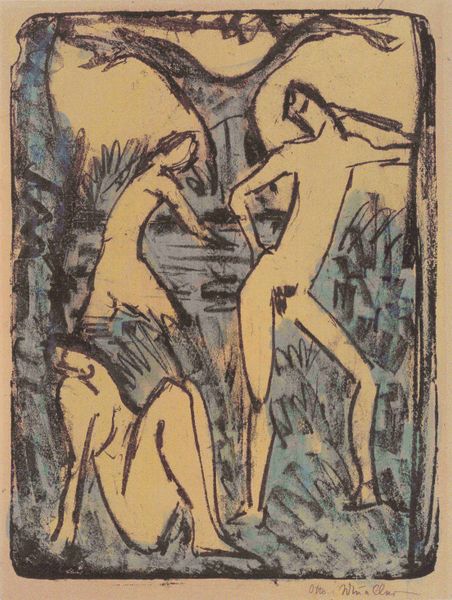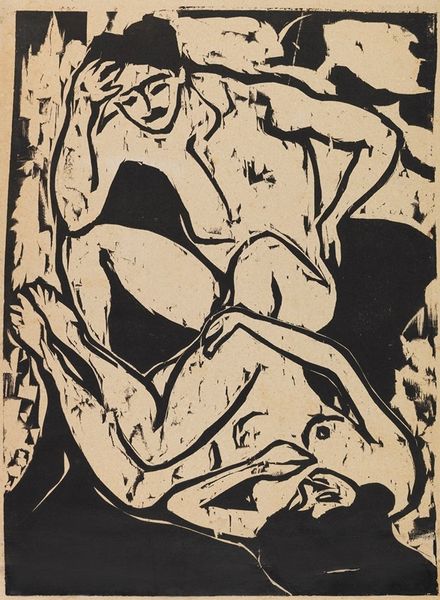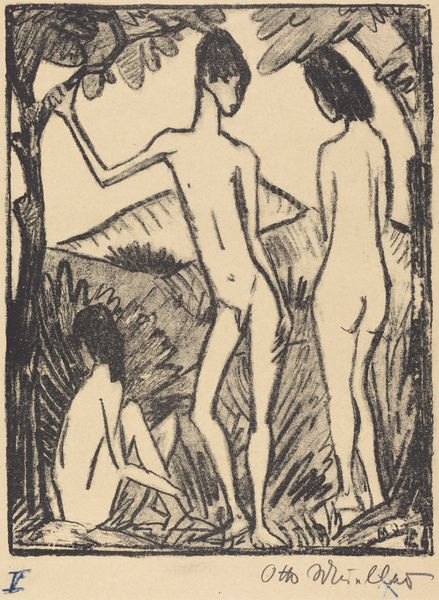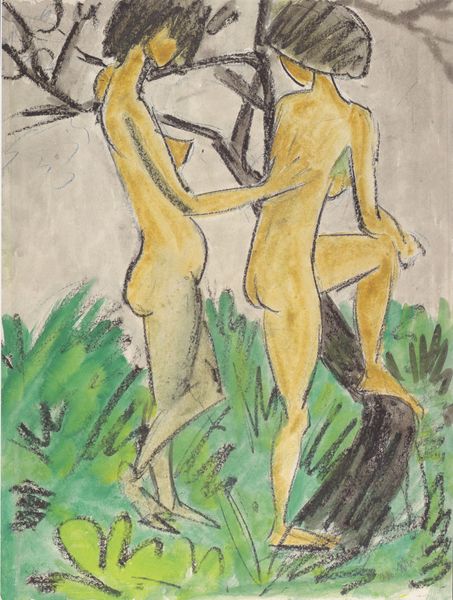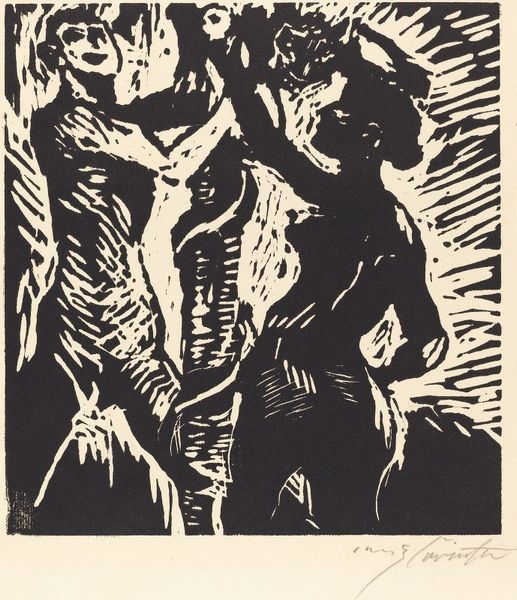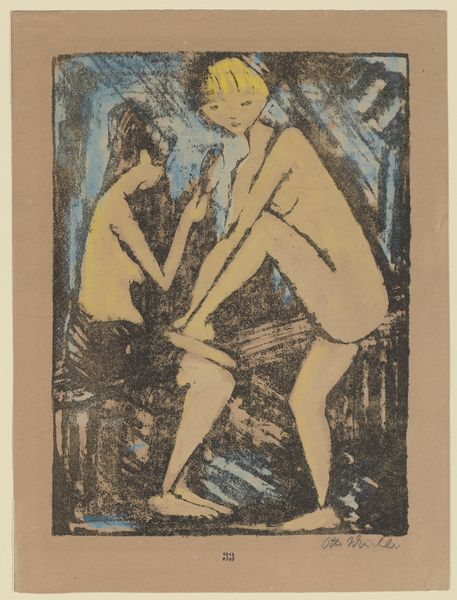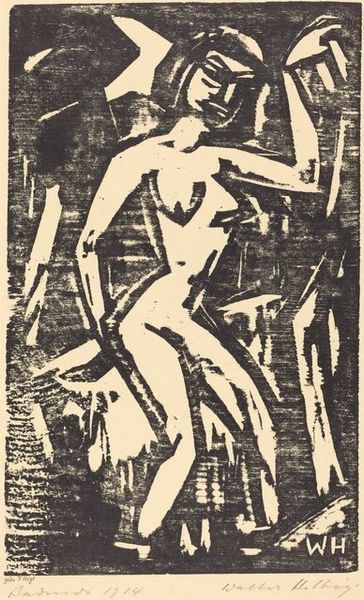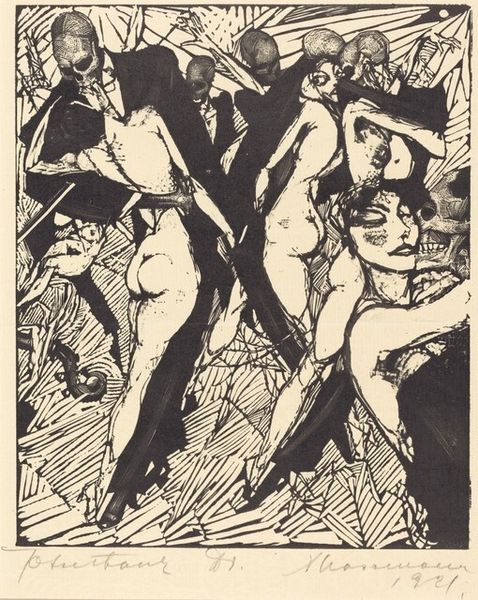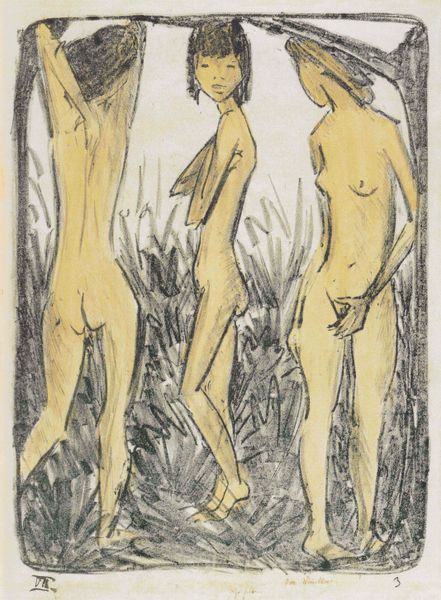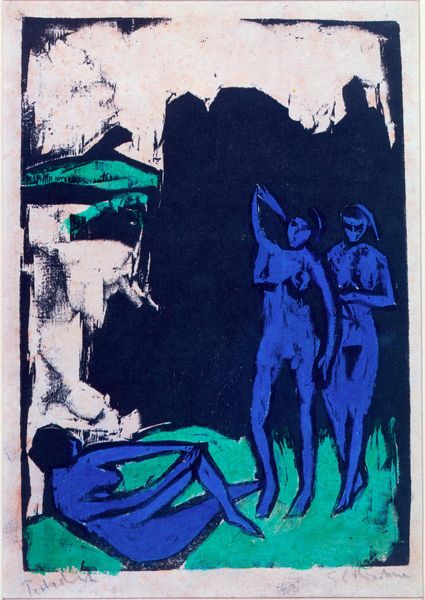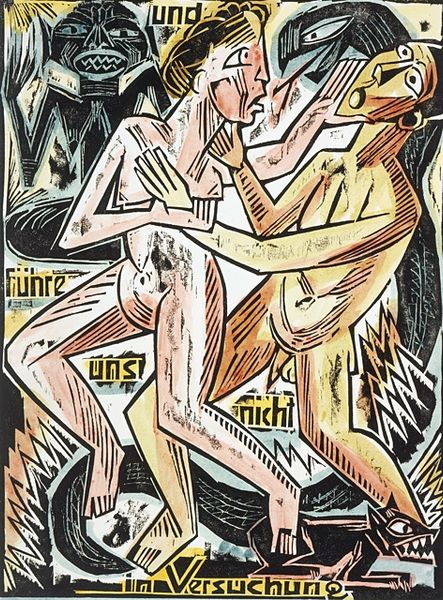
drawing, ink
#
drawing
#
ink drawing
#
narrative-art
#
figuration
#
ink
#
expressionism
#
nude
#
watercolor
Dimensions: 32.6 x 43.3 cm
Copyright: Public domain
Curator: What a powerfully disturbing piece! I immediately feel a sense of vulnerability and fear emanating from this… this alleged victim. Editor: This is Otto Mueller's "Der Mord," created in 1912. It seems to be ink and watercolor on paper. It's the economy of the materials used, ink, watercolor that makes this all the more arresting. It reminds us how even basic media can convey significant weight. Curator: Indeed. The crudeness, or the... simplicity of the execution amplifies its disturbing message. Look at the male figure's arm reaching. It speaks to male violence against women—it really underscores how complicit bystanders often are. Even in 1912, conversations were emerging, through movements like suffrage. How does that connect with this scene of horror? Editor: It's the graphic simplicity that strikes me first. Look at the texture! How do the material aspects of its construction further your interpretations? Curator: The stark contrast serves to strip away any romanticism one might associate with a classical subject like a nude figure. It challenges, even mocks, those traditions. The murderer seems like a dark specter, an uncanny form. How the figures are flattened suggests that a unique individual isn’t being violated: one of a larger systematic oppression is suggested. Editor: Exactly. And the medium here—ink and wash—these inexpensive materials suggest something mass produced, and further speaks to this very standardization you refer to, this dehumanization! The texture becomes evidence of its manufacture—almost violent in its repetitive application. Do you think the rough and visible means of production comment on exploitation, in a broader sense? Curator: I think it speaks volumes about the vulnerability and disposable state of certain bodies under conditions that permit male impunity, that very few are going to interject or provide testimony about these crimes. Thank you, I hadn't fully digested it. It’s always insightful to situate artworks within a material reality, rather than simply focusing on their aesthetic value or intended narrative. Editor: Yes, likewise, thank you! Seeing a work like this through the lens of contemporary issues gives it new depth and resonance.
Comments
No comments
Be the first to comment and join the conversation on the ultimate creative platform.
